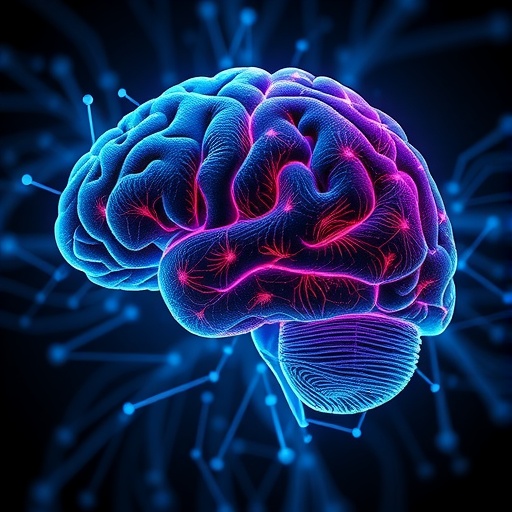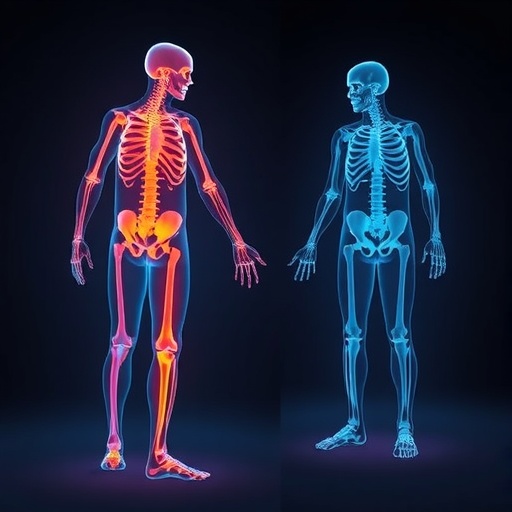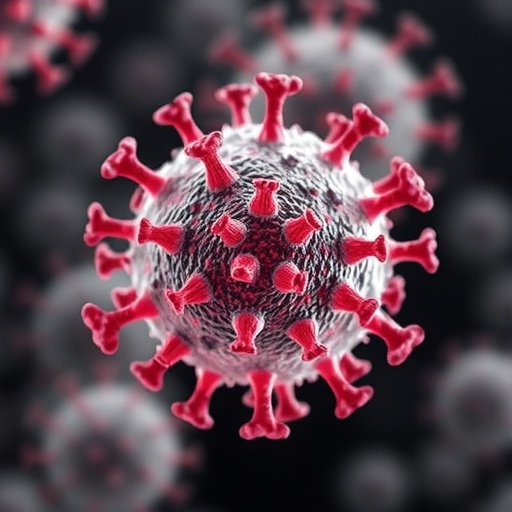In the intricate dance of social interaction, individuals continually act and react to each other, forging a dynamic feedback loop that shapes collective behavior. This fundamental characteristic of sociality has fascinated neuroscientists and computational researchers alike, raising profound questions about how brains coordinate and communicate in real time. A groundbreaking study published in Nature by Zhang, Phi, Li, and colleagues pushes the frontier of social neuroscience by examining the neural underpinnings of such interactions not only in biological organisms but also in artificial intelligence (AI) systems. Their findings unveil a remarkable convergence in how neural systems—both organic and synthetic—encode shared social experiences.
The team focused on the dorsomedial prefrontal cortex (dmPFC) of mice, a brain region deeply implicated in social cognition and decision-making. By employing sophisticated molecular techniques to record the activity of specific neuron types during social engagement, the researchers discovered that the seemingly complex, multidimensional neural activity within each brain can be mathematically decomposed into two distinctive subspaces. One of these—the shared neural subspace—encapsulates neural signals common across interacting individuals, essentially reflecting the intertwining of social brains. The other is unique to each individual, representing internal processes not directly influenced by social partners.
What distinguishes this study is its emphasis on the comparative neural architecture between glutamatergic neurons, which excite other neurons, and GABAergic neurons, which inhibit activity. Intriguingly, GABAergic neurons in the dmPFC displayed a disproportionately larger shared neural subspace. This finding implies that inhibitory neural circuits might play a pivotal role in synchronizing brain activity between individuals, possibly mediating a reciprocal informational exchange during social behavior. Such a mechanism challenges conventional perspectives that often prioritize excitatory pathways in behavioral coordination.
.adsslot_WfksEvNwlJ{ width:728px !important; height:90px !important; }
@media (max-width:1199px) { .adsslot_WfksEvNwlJ{ width:468px !important; height:60px !important; } }
@media (max-width:767px) { .adsslot_WfksEvNwlJ{ width:320px !important; height:50px !important; } }
ADVERTISEMENT
Expanding beyond biological substrates, the authors ingeniously applied their conceptual framework to artificial intelligence agents, which were designed to interact and learn through social exploration. As these AI agents engaged with one another, the researchers observed emergent shared neural dynamics strikingly analogous to those found in murine brains. This parallel implies that shared neural signatures are not merely biological artifacts but might represent universal computational strategies for social coordination across diverse systems.
Critically, the study addressed causality by experimentally disrupting neural components associated with shared dynamics in AI agents. This perturbation caused a significant suppression of agents’ social output, underscoring the functional importance of these shared states. Such causative evidence strengthens the argument that shared neural subspaces actively drive social interactions rather than simply reflecting passive correlates.
The implications of these discoveries ripple across multiple domains. For neuroscience, this work provides a compelling mechanistic insight into how brains synchronize during social encounters, pinpointing inhibitory neurons as central players. For artificial intelligence, it suggests a promising avenue to enhance social competencies in machines by engineering architectures that foster shared internal representations, potentially revolutionizing human-AI interaction.
Moreover, the analytical tools established in this study offer a novel lens through which inter-brain connectivity can be examined. Moving away from simplistic one-to-one correlations, their multidimensional decomposition paves the way for quantifying the geometry of shared and unique neural information, enabling an unprecedented resolution in dissecting cooperative behaviors.
From a theoretical standpoint, interpreting social interaction as a dynamic feedback loop unified by overlapping neural subspaces challenges existing paradigms that separate individual cognition from group dynamics. This integrative perspective may catalyze new models of collective intelligence, wherein individual neural states are inextricably linked to the emergent properties of dyadic or group interactions.
The use of genetically identified neurons accentuates the granularity and precision of this research. Through molecular targeting, the study circumvents the ambiguity of bulk neural population recordings, revealing cell-type specific contributions to social neural synchrony. This heightened specificity sets a new standard for future investigations probing the microcircuitry underlying complex behavior.
Importantly, the translation from rodent models to artificial agents embodies a trend toward cross-disciplinary convergence in science. Bridging biology, computational modeling, and AI development blurs boundaries, enriching our understanding of social phenomena beyond anthropocentric frameworks. The universality of shared neural dynamics may well underlie the functionality of varied intelligent systems, biological or artificial.
Further exploration is warranted to decipher how these neural subspaces evolve over time and across different social contexts. Longitudinal studies examining how social hierarchies, familiarity, or emotional valence modulate shared dynamics could yield transformative insights. Likewise, dissecting how neuromodulatory systems influence the balance between shared and unique neural activity remains a captivating open frontier.
The repercussions extend into clinical realms, as disruptions in social neural synchrony are hallmarks of psychiatric conditions such as autism spectrum disorder and schizophrenia. Mapping the substrates of shared neural spaces could inform therapeutic strategies aiming to restore interpersonal neural alignment, thereby ameliorating social dysfunction.
In sum, Zhang and colleagues deliver a compelling narrative and robust evidence positioning shared neural dynamics as a foundational principle of social interaction. Their ingenious integration of molecular neuroscience, computational modeling, and AI not only elucidates the substrates of inter-brain coordination but also lays the groundwork for next-generation social machines. As we move toward more intricately connected societies and increasingly embedded AI companions, understanding the neural choreography of social interaction promises to transform how we conceptualize communication, cooperation, and community.
Subject of Research: Neural mechanisms of social interaction and inter-brain dynamics in mice and artificial intelligence systems.
Article Title: Inter-brain neural dynamics in biological and artificial intelligence systems.
Article References:
Zhang, X., Phi, N., Li, Q. et al. Inter-brain neural dynamics in biological and artificial intelligence systems.
Nature (2025). https://doi.org/10.1038/s41586-025-09196-4
Image Credits: AI Generated
Tags: AI systems and social cognitioncollective behavior in social interactionscomputational neuroscience advancementsdorsomedial prefrontal cortex functionsfeedback loops in social behaviorindividual versus shared neural signalsinter-brain neural dynamicsneural activity decomposition techniquesneural systems in biological organismsshared social experiences in neurosciencesocial engagement in mice studiessocial neuroscience and AI





